After four consecutive months of work, with major advances and minor advances, it adds up to the biggest advance. I have sculpted what I see as my best plane that I have posted on SimplePlanes. The Rockwell B-1B Lancer strategic bomber is my favorite aircraft. I have a model B-1B on my desk right next to me as I write this. I think that this build is very hyped up for and is my best work. The Lancer I built has been named Frostbite, and has many details on it that you can try to hunt for. A very large amount of my builds are VR friendly and compatible, however this one is not. I cannot get it to have such a complex cockpit and flight control system without a lengthy postponement of this upload. So I apologize to my VR followers and downloaders for this inconvenience.
Wikipedia
The Rockwell B-1 Lancer[b] is a supersonic variable-sweep wing, heavy bomber used by the United States Air Force. It has been nicknamed the "Bone" (from "B-One").[2][3] As of 2024, it is one of the Air Force's three strategic bombers, along with the B-2 Spirit And the B-52 Stratofortress. Its 75,000-pound (34,000 kg) payload is the heaviest of any U.S. bomber.[4]
The B-1 was first envisioned in the 1960s as a bomber that would combine the Mach 2 speed of the B-58 Hustler with the range and payload of the B-52, ultimately replacing both. After a long series of studies, North American Rockwell(subsequently renamed Rockwell International, B-1 division later acquired by Boeing) won the design contest for what emerged as the B-1A. Prototypes of this version could fly Mach 2.2 at high altitude and long distances at Mach 0.85 at very low altitudes. The program was canceled in 1977 due to its high cost, the introduction of the AGM-86 cruise missile that flew the same basic speed and distance, and early work on the B-2 stealth bomber.
The program was restarted in 1981, largely as an interim measure due to delays in the B-2 stealth bomber program. The B-1A design was altered, reducing top speed to Mach 1.25 at high altitude, increasing low-altitude speed to Mach 0.96, extensively improving electronic components, and upgrading the airframe to carry more fuel and weapons. Dubbed the B-1B, deliveries of the new variant began in 1985; the plane formally entered service with Strategic Air Command (SAC) as a nuclear bomber the following year. By 1988, all 100 aircraft had been delivered.
With the disestablishment of SAC and its reassignment to the Air Combat Command in 1992, the B-1B's nuclear capabilities were disabled and it was outfitted for conventional bombing. It first served in combat during Operation Desert Fox in 1998 and again during the NATO action in Kosovo the following year. The B-1B has supported U.S. and NATO military forces in Afghanistan and Iraq. As of 2021 the Air Force has 45 B-1Bs.[5] The Northrop Grumman B-21 Raider is to begin replacing the B-1B after 2025; all B-1s are planned to be retired by 2036.[6]
Development
Background
Main article: North American XB-70 Valkyrie
In 1955, the USAF issued requirements for a new bomber combining the payload and range of the Boeing B-52 Stratofortress with the Mach 2 maximum speed of the Convair B-58 Hustler.[7] In December 1957, the USAF selected North American Aviation's B-70 Valkyrie for this role, a six-engine bomber that could cruise at Mach 3 at high altitude (70,000 ft or 21,000 m).[8][9] Soviet Union interceptor aircraft, the only effective anti-bomber weapon in the 1950s,[10] were already unable to intercept the high-flying Lockheed U-2;[11] the Valkyrie would fly at similar altitudes, but much higher speeds, and was expected to fly right by the fighters.[10]
By the late 1950s, however, anti-aircraft surface-to-air missiles (SAMs) could threaten high-altitude aircraft,[12] as demonstrated by the 1960 downing of Gary Powers' U-2.[13] The USAF Strategic Air Command (SAC) was aware of these developments and had begun moving its bombers to low-level penetration even before the U-2 incident. This tactic greatly reduces radar detection distances through the use of terrain masking; using features of the terrain like hills and valleys, the line-of-sight from the radar to the bomber can be broken, rendering the radar (and human observers) incapable of seeing it.[14] Additionally, radars of the era were subject to "clutter" from stray returns from the ground and other objects, which meant a minimum angle existed above the horizon where they could detect a target. Bombers flying at low altitudes could remain under these angles simply by keeping their distance from the radar sites. This combination of effects made SAMs of the era ineffective against low-flying aircraft.[14][15] The same effects also meant that low-flying aircraft were difficult to detect by higher-flying interceptors, since their radar systems could not readily pick out aircraft against the clutter from ground reflections (lack of look-down/shoot-down capability).
The switch from high-altitude to low-altitude flight profiles severely affected the B-70, the design of which was tuned for high-altitude performance. Higher aerodynamic drag at low level limited the B-70 to subsonic speed while dramatically decreasing its range.[12] The result would be an aircraft with somewhat higher subsonic speed than the B-52, but less range. Because of this, and a growing shift to the intercontinental ballistic missile (ICBM) force, the B-70 bomber program was cancelled in 1961 by President John F. Kennedy,[10][16] and the two XB-70 prototypes were used in a supersonic research program.[17]
Although never intended for the low-level role, the B-52's flexibility allowed it to outlast its intended successor as the nature of the air war environment changed. The B-52's huge fuel load allowed it to operate at lower altitudes for longer times, and the large airframe allowed the addition of improved radar jamming and deception suites to deal with radars.[18] During the Vietnam War, the concept that all future wars would be nuclear was turned on its head, and the "big belly" modifications increased the B-52's total bomb load to 60,000 pounds (27,000 kg),[19] turning it into a powerful tactical aircraft which could be used against ground troops along with strategic targets from high altitudes.[15] The much smaller bomb bay of the B-70 would have made it much less useful in this role.
Design studies and delays
Although effective, the B-52 was not ideal for the low-level role. This led to a number of aircraft designs known as penetrators, which were tuned specifically for long-range low-altitude flight. The first of these designs to see operation was the supersonic F-111 fighter-bomber, which used variable-sweep wings for tactical missions.[20] A number of studies on a strategic-range counterpart followed.
The first post-B-70 strategic penetrator study was known as the Subsonic Low-Altitude Bomber (SLAB), which was completed in 1961. This produced a design that looked more like an airliner than a bomber, with a large swept wing, T-tail, and large high-bypass engines.[21] This was followed by the similar Extended Range Strike Aircraft (ERSA), which added a variable-sweep wing, then en vogue in the aviation industry. ERSA envisioned a relatively small aircraft with a 10,000-pound (4,500 kg) payload and a range of 10,070 miles (16,210 km) including 2,900 miles (4,700 km) flown at low altitudes. In August 1963, the similar Low-Altitude Manned Penetrator design was completed, which called for an aircraft with a 20,000-pound (9,100 kg) bomb load and somewhat shorter range of 8,230 miles (13,240 km).[22][23]
These all culminated in the October 1963 Advanced Manned Precision Strike System (AMPSS), which led to industry studies at Boeing, General Dynamics, and North American.[24][25] In mid-1964, the USAF had revised its requirements and retitled the project as Advanced Manned Strategic Aircraft (AMSA), which differed from AMPSS primarily in that it also demanded a high-speed high-altitude capability, similar to that of the existing Mach 2-class F-111.[26] Given the lengthy series of design studies, Rockwell engineers joked that the new name actually stood for "America's Most Studied Aircraft".[27]
The arguments that led to the cancellation of the B-70 program had led some to question the need for a new strategic bomber of any sort. The USAF was adamant about retaining bombers as part of the nuclear triad concept that included bombers, ICBMs, and submarine-launched ballistic missiles (SLBMs) in a combined package that complicated any potential defense. They argued that the bomber was needed to attack hardened military targets and to provide a safe counterforce option because the bombers could be quickly launched into safe loitering areas where they could not be attacked. However, the introduction of the SLBM made moot the mobility and survivability argument, and a newer generation of ICBMs, such as the Minuteman III, had the accuracy and speed needed to attack point targets. During this time, ICBMs were seen as a less costly option based on their lower unit cost,[28] but development costs were much higher.[12] Secretary of Defense Robert McNamara preferred ICBMs over bombers for the Air Force portion of the deterrent force[29] and felt a new expensive bomber was not needed.[30][31] McNamara limited the AMSA program to studies and component development beginning in 1964.[31]
Program studies continued; IBM and Autonetics were awarded AMSA advanced avionics study contracts in 1968.[31][32] McNamara remained opposed to the program in favor of upgrading the existing B-52 fleet and adding nearly 300 FB-111s for shorter range roles then being filled by the B-58.[15][31] He again vetoed funding for AMSA aircraft development in 1968.[32]
B-1A program
President Richard Nixon reestablished the AMSA program after taking office, keeping with his administration's flexible response strategy that required a broad range of options short of general nuclear war.[34]Nixon's Secretary of Defense, Melvin Laird, reviewed the programs and decided to lower the numbers of FB-111s, since they lacked the desired range, and recommended that the AMSA design studies be accelerated.[34] In April 1969, the program officially became the B-1A.[15][34] This was the first entry in the new bomber designation series, created in 1962. The Air Force issued a request for proposals in November 1969.[35]
Proposals were submitted by Boeing, General Dynamics and North American Rockwell in January 1970.[35][36] In June 1970, North American Rockwell was awarded the development contract.[35] The original program called for two test airframes, five flyable aircraft, and 40 engines. This was cut in 1971 to one ground and three flight test aircraft.[37] The company changed its name to Rockwell International and named its aircraft division North American Aircraft Operations in 1973.[38] A fourth prototype, built to production standards, was ordered in the fiscal year 1976 budget. Plans called for 240 B-1As to be built, with initial operational capability set for 1979.[39]
Rockwell's design had features common to the F-111 and XB-70. It used a crew escape capsule, that ejected as a unit to improve crew survivability if the crew had to abandon the aircraft at high speed. Additionally, the design featured large variable-sweep wings in order to provide both more lift during takeoff and landing, and lower drag during a high-speed dash phase.[40] With the wings set to their widest position the aircraft had a much better airfield performance than the B-52, allowing it to operate from a wider variety of bases. Penetration of the Soviet Union's defenses would take place at supersonic speed, crossing them as quickly as possible before entering the more sparsely defended interior of the country where speeds could be reduced again.[40] The large size and fuel capacity of the design would allow the "dash" portion of the flight to be relatively long.
In order to achieve the required Mach 2 performance at high altitudes, the exhaust nozzles and air intake ramps were variable.[41] Initially, it had been expected that a Mach 1.2 performance could be achieved at low altitude, which required that titanium be used in critical areas in the fuselage and wing structure. The low altitude performance requirement was later lowered to Mach 0.85, reducing the amount of titanium and therefore cost.[37] A pair of small vanes mounted near the nose are part of an active vibration damping system that smooths out the otherwise bumpy low-altitude ride.[42] The first three B-1As featured the escape capsule that ejected the cockpit with all four crew members inside. The fourth B-1A was equipped with a conventional ejection seat for each crew member.[43]
The B-1A mockup review occurred in late October 1971; this resulted in 297 requests for alteration to the design due to failures to meet specifications and desired improvements for ease of maintenance and operation.[44] The first B-1A prototype (Air Force serial no. 74–0158) flew on 23 December 1974.[45] As the program continued the per-unit cost continued to rise in part because of high inflation during that period. In 1970, the estimated unit cost was $40 million, and by 1975, this figure had climbed to $70 million.[46]
New problems and cancellation
In 1976, Soviet pilot Viktor Belenko defected to Japan with his MiG-25 "Foxbat".[47] During debriefing he described a new "super-Foxbat" (almost certainly referring to the MiG-31) that had look-down/shoot-down radar in order to attack cruise missiles. This would also make any low-level penetration aircraft "visible" and easy to attack.[48] Given that the B-1's armament suite was similar to the B-52, and it then appeared no more likely to survive Soviet airspace than the B-52, the program was increasingly questioned.[49] In particular, Senator William Proxmire continually derided the B-1 in public, arguing it was an outlandishly expensive dinosaur. During the 1976 federal election campaign, Jimmy Carter made it one of the Democratic Party's platforms, saying "The B-1 bomber is an example of a proposed system which should not be funded and would be wasteful of taxpayers' dollars."[50]
When Carter took office in 1977 he ordered a review of the entire program. By this point the projected cost of the program had risen to over $100 million per aircraft, although this was lifetime cost over 20 years. He was informed of the relatively new work on stealth aircraft that had started in 1975, and he decided that this was a better approach than the B-1. Pentagon officials also stated that the AGM-86 Air-Launched Cruise Missile (ALCM) launched from the existing B-52 fleet would give the USAF equal capability of penetrating Soviet airspace. With a range of 1,500 miles (2,400 km), the ALCM could be launched well outside the range of any Soviet defenses and penetrate at low altitude like a bomber (with a much lower radar cross-section (RCS) due to smaller size), and in much greater numbers at a lower cost.[51] A small number of B-52s could launch hundreds of ALCMs, saturating the defense. A program to improve the B-52 and develop and deploy the ALCM would cost at least 20% less than the planned 244 B-1As.[50]
On 30 June 1977, Carter announced that the B-1A would be canceled in favor of ICBMs, SLBMs, and a fleet of modernized B-52s armed with ALCMs.[39] Carter called it "one of the most difficult decisions that I've made since I've been in office." No mention of the stealth work was made public with the program being top secret, but it is now known that in early 1978 he authorized the Advanced Technology Bomber (ATB) project, which eventually led to the B-2 Spirit.[52]
Domestically, the reaction to the cancellation was split along partisan lines. The Department of Defense was surprised by the announcement; it expected that the number of B-1s ordered would be reduced to around 150.[53] Congressman Robert Dornan (R-CA) claimed, "They're breaking out the vodka and caviar in Moscow."[54]However, it appears the Soviets were more concerned by large numbers of ALCMs representing a much greater threat than a smaller number of B-1s. Soviet news agency TASS commented that "the implementation of these militaristic plans has seriously complicated efforts for the limitation of the strategic arms race."[50]Western military leaders were generally happy with the decision. NATO commander Alexander Haig described the ALCM as an "attractive alternative" to the B-1. French General Georges Buis stated "The B-1 is a formidable weapon, but not terribly useful. For the price of one bomber, you can have 200 cruise missiles."[50]
Flight tests of the four B-1A prototypes for the B-1A program continued through April 1981. The program included 70 flights totaling 378 hours. A top speed of Mach 2.22 was reached by the second B-1A. Engine testing also continued during this time with the YF101 engines totaling almost 7,600 hours.[55]
Shifting priorities
It was during this period that the Soviets started to assert themselves in several new theaters of action, in particular through Cuban proxies during the Angolan Civil War starting in 1975 and the Soviet invasion of Afghanistan in 1979. U.S. strategy to this point had been focused on containing Communism and preparation for war in Europe. The new Soviet actions revealed that the military lacked capability outside these narrow confines.[citation needed]
The U.S. Department of Defense responded by accelerating its Rapid Deployment Forces concept but suffered from major problems with airlift and sealift capability.[56] In order to slow an enemy invasion of other countries, air power was critical; however the key Iran-Afghanistan border was outside the range of the United States Navy's carrier-based attack aircraft, leaving this role to the U.S. Air Force.
During the 1980 presidential campaign, Ronald Reagan campaigned heavily on the platform that Carter was weak on defense, citing the cancellation of the B-1 program as an example, a theme he continued using into the 1980s.[57] During this time Carter's defense secretary, Harold Brown, announced the stealth bomber project, apparently implying that this was the reason for the B-1 cancellation.[58][verification needed]
B-1B program
On taking office, Reagan was faced with the same decision as Carter before: whether to continue with the B-1 for the short term, or to wait for the development of the ATB, a much more advanced aircraft. Studies suggested that the existing B-52 fleet with ALCM would remain a credible threat until 1985. It was predicted that 75% of the B-52 force would survive to attack its targets.[59] After 1985, the introduction of the SA-10 missile, the MiG-31 interceptor and the first effective Soviet Airborne Early Warning and Control (AWACS) systems would make the B-52 increasingly vulnerable.[60] During 1981, funds were allocated to a new study for a bomber for the 1990s time-frame which led to developing the Long-Range Combat Aircraft (LRCA) project. The LRCA evaluated the B-1, F-111, and ATB as possible solutions; an emphasis was placed on multi-role capabilities, as opposed to purely strategic operations.[59]
In 1981, it was believed the B-1 could be in operation before the ATB, covering the transitional period between the B-52's increasing vulnerability and the ATB's introduction. Reagan decided the best solution was to procure both the B-1 and ATB, and on 2 October 1981 he announced that 100 B-1s were to be ordered to fill the LRCA role.[40][61]
In January 1982, the U.S. Air Force awarded two contracts to Rockwell worth a combined $2.2 billion for the development and production of 100 new B-1 bombers.[62] Numerous changes were made to the design to make it better suited to the now expected missions, resulting in the B-1B.[51] These changes included a reduction in maximum speed,[58] which allowed the variable-aspect intake ramps to be replaced by simpler fixed geometry intake ramps. This reduced the B-1B's radar cross-section which was seen as a good trade off for the speed decrease.[40] High subsonic speeds at low altitude became a focus area for the revised design,[58] and low-level speeds were increased from about Mach 0.85 to 0.92. The B-1B has a maximum speed of Mach 1.25 at higher altitudes.[40][63]
The B-1B's maximum takeoff weight was increased to 477,000 pounds (216,000 kg) from the B-1A's 395,000 pounds (179,000 kg).[40][64] The weight increase was to allow for takeoff with a full internal fuel load and for external weapons to be carried. Rockwell engineers were able to reinforce critical areas and lighten non-critical areas of the airframe, so the increase in empty weight was minimal.[64] To deal with the introduction of the MiG-31 equipped with the new Zaslon radar system, and other aircraft with look-down capability, the B-1B's electronic warfare suite was significantly upgraded.[40]
Opposition to the plan was widespread within Congress. Critics pointed out that many of the original problems remained in both areas of performance and expense.[65] In particular it seemed the B-52 fitted with electronics similar to the B-1B would be equally able to avoid interception, as the speed advantage of the B-1 was now minimal. It also appeared that the "interim" time frame served by the B-1B would be less than a decade, being rendered obsolete
shortly after the introduction of a much more capable ATB design.[66] The primary argument in favor of the B-1 was its large conventional weapon payload, and that its takeoff performance allowed it to operate with a credible bomb load from a much wider variety of airfields. Production subcontracts were spread across many congressional districts, making the aircraft more popular on Capitol Hill.[67]
B-1A No. 1 was disassembled and used for radar testing at the Rome Air Development Center in the former Griffiss Air Force Base, New York.[68] B-1As No. 2 and No. 4 were then modified to include B-1B systems. The first B-1B was completed and began flight testing in March 1983. The first production B-1B was rolled out on 4 September 1984 and first flew on 18 October 1984.[69] The 100th and final B-1B was delivered on 2 May 1988;[70] before the last B-1B was delivered, the USAF had determined that the aircraft was vulnerable to Soviet air defenses.[71]
In 1996, Rockwell International sold most of its space and defense operations to Boeing,[72] which continues as the primary contractor for the B-1 as of 2024.[1]
Instructions for B-1B
AG2 - Beacon Light
AG3 - Refueling Light
AG4 - Navigation Lights
VTOL down - Flaps
VTOL up - Wing Sweep Control
TAKEOFF__
Increase throttle to 20%, no higher than 40%, Flaps down Wings out. Accelerate to 230 MPH and lift nose up. In a moment the plane will start to climb. Maintain a climb angle of 10º.
CRUISE___
Maintain steady altitude and adjust trim if necessary. For supersonic flight, increase wing sweep to full and adjust throttle.
LANDING___
Decrease throttle to 25% and adjust flaps to full. Decelerate to 200-260 MPH and descend to the runway — stay centered. As you are ready to land, cut throttle to 15% and adjust altitude if off. Continue course, when about to touch down, cut the throttle and flare up the nose slightly. Once all wheels have touched the ground and you are centered, start to brake. Don’t let go until you have stopped.
Gallery





IRL bomber







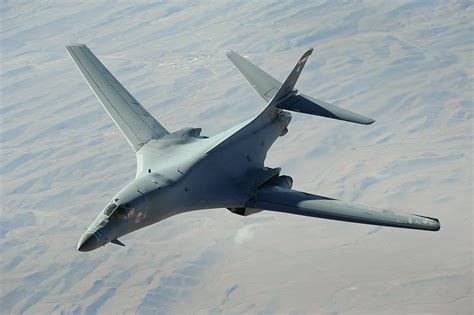




If you enjoyed the build, please upvote if you can! It really helps me keep going!l
Specifications
Spotlights
- This craft is curated
- Trainzo 1.2 years ago
- Kerbango 1.2 years ago
- ShinyGemsBro 1.2 years ago
- TheUltimatePlaneLover 1.2 years ago
- Zaineman 1.2 years ago
- dussts 1.2 years ago
- MAPA 1.2 years ago
- TheMouse 1.2 years ago
General Characteristics
- Predecessor Rockwell B-1B Lancer
- Successors 3 airplane(s) +21 bonus
- Created On iOS
- Wingspan 133.4ft (40.7m)
- Length 145.0ft (44.2m)
- Height 35.4ft (10.8m)
- Empty Weight 135,525lbs (61,473kg)
- Loaded Weight 201,338lbs (91,325kg)
Performance
- Power/Weight Ratio 3.348
- Wing Loading 125.3lbs/ft2 (611.9kg/m2)
- Wing Area 1,606.5ft2 (149.3m2)
- Drag Points 45075
Parts
- Number of Parts 473
- Control Surfaces 8
- Performance Cost 2,222

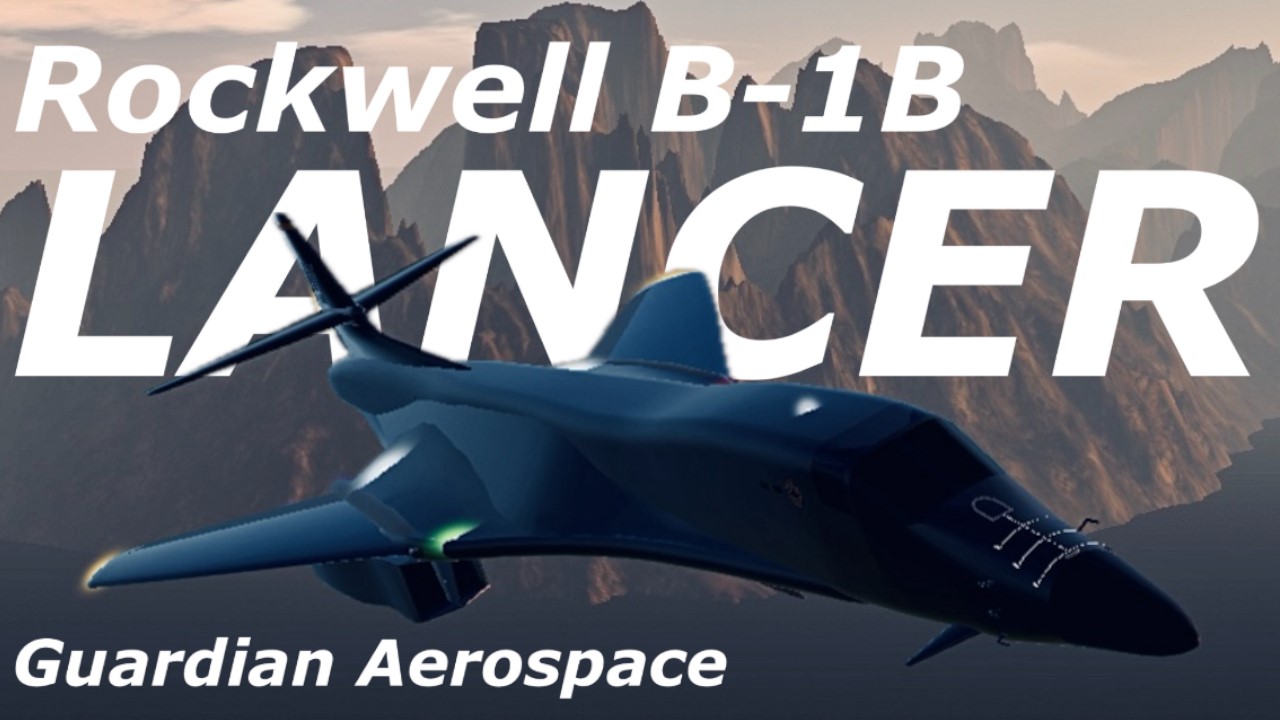
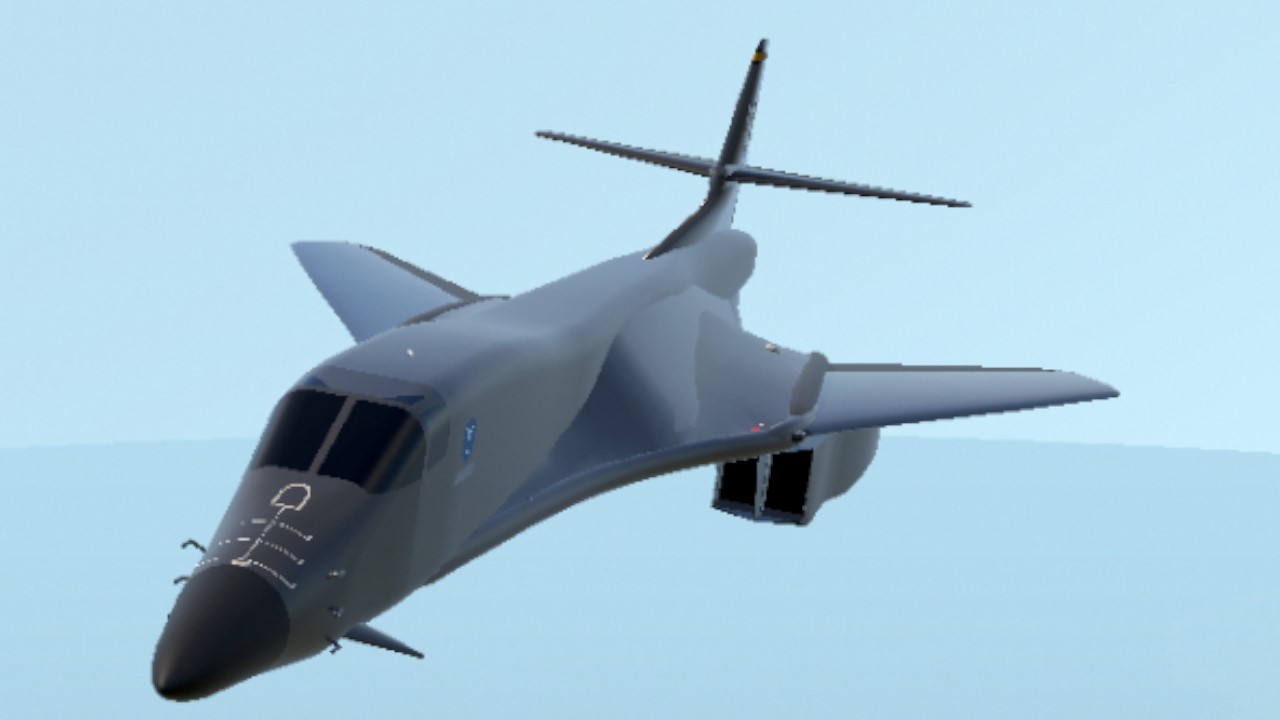

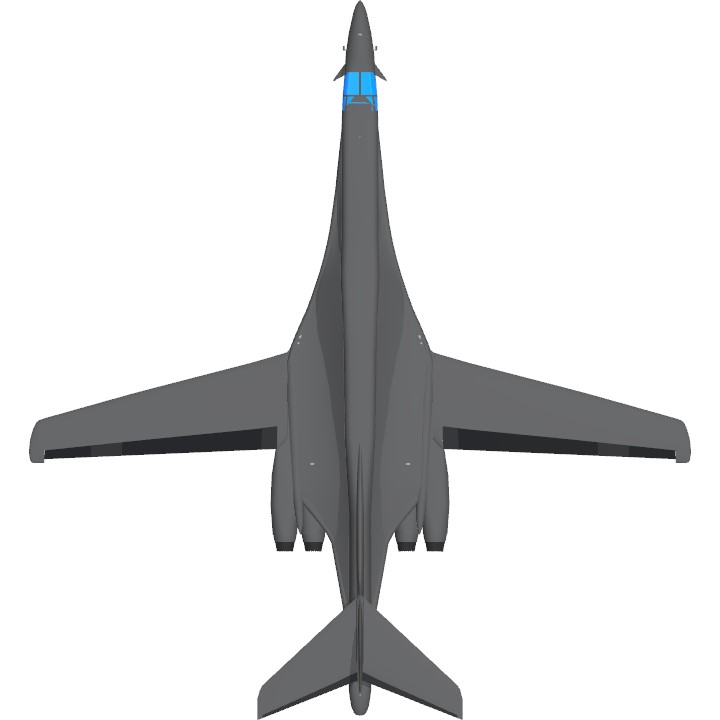
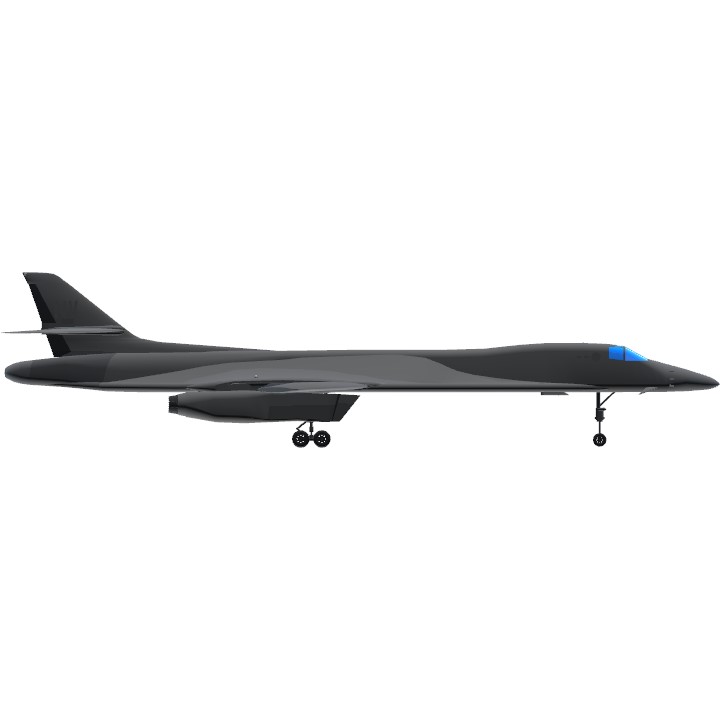

Nice Selfie!
10,000 Downloads! :D
100!!
Excellent work, really was able to pull off the style of the thing and make it look nice while retaining part count.
I forgot to tag mr @zaineman, sorry
Damn, I should’ve written a paper on this beauty.
@GuardianAerospace sorry for being late but good work the effort was unimaginable
Read the takeoff instructions if you’re a full power person
Dropped a banger, i like it!
If you want to be tagged on future builds, please go here
SAY SOMETHING BAD ABOUT THE TU160!
FINALLY!
YAYAYYAYAYYAYAYYAYAYAYAY YAY AYAYAYAY YA AY AYAY YAYAYAYYAYAYYAYAYAY YAYAYYAYAY YAYAYAYA YAYAYA YAYYA YAYAY YAYAYA YAYAYYAYA YAYAYAYYA YAY YA AY AYAY AYA YAYAY AYAY AYA YAY YA YAY AYYA YAYY AY AYYAYAYAYAY AYYA YAYA
After 4 months, it’s here!
@B1BLancer
Making the cake rn :0
@B1BLancer
It'll post it on friday
@KorKaiorWhatever Tag
@B1BLancer
I gotta make a cake for it :3
@KorKaiorWhatever thank you!
@B1BLancer
No probs ^^
So yea
Happy birthday Lancer ^^
@KorKaiorWhatever yes, i didnt even notice, thanks for the reminder!
1 year anniversary :D
@Mineglacier7251yt good question. I will make a remaster eventually basically remaking my entire B1. It will have weapons, better realism, more details, and maybe a cockpit. Don’t get your hopes up though because it wont even be started for maybe 6 months or most likely even longer.
Where are the bombs? It's a bomber plane!
@YourAverageB1BLancerSimp nawwwwww T-60 better